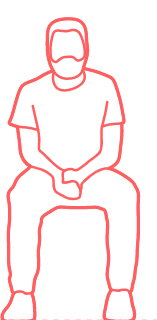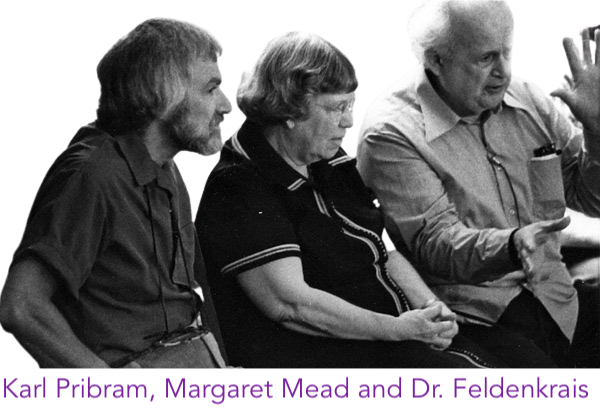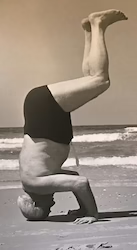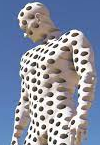Feeding allows a system to expand, to grow; or, when we do not feed a system, it withers. Your brain is hungry for stimulation, it is always looking for variation. By providing variation and stimulation, we can satisfy that hunger, thereby allowing the connections in the brain to increase.

In the following excerpt from a longer Awareness Through Movement® lesson there are tell-tale invitations for stimulation of the brain. Do the excerpt, then during the pause, follow through the analysis to bring a greater understanding of how Feldenkrais lessons help feed the brain.
To start, sit comfortably at the front of your chair, feet flat on the floor.
- Choose to begin to turn your head slowly so you can tell how far you can see in that direction. Repeat as many times as you like so as to confirm your limit.
Remember that place, that limit. - What about the other direction. Choose to turn your head slowly so you can find your limit and remember that.
Which side did you go further? - Whichever side that was, lift the other arm so the hand is in front, shoulder high. Allow the hand to hang.
- Slowly bring the arm forward as if the back of your hand could graze a wall in front, and return.
- Repeat and listen to your shoulders — how one turns forward and one might turn a little back.
It may feel normal to look at the hand going forward. Do this a few times (maybe 3 or 4) - Drop the arm, and now turn to the easy side — and notice if you turn any further.
- Return to the front, raise the same arm again, and begin to bring it forward, but this time, as it goes forward, allow the head and eyes to look away. Repeat and notice whether the hand goes further forward.
- If you are a bit curious about this, you might compare whether the hand goes further forward when the head turns toward the hand, or away.
- Drop the arm, and now turn to the easy side — and notice if you turn any further. Maybe turn to the other side — has it improved as well?
Pause to think about this.
You can do this sequence as an exercise, or you can do it as a process for developing your awareness and increasing your brain activity.
Asking yourself questions about measuring (like how far you turn, or how far the had goes forward) is an activity that stimulates the brain.
Comparing two distances stimulates even more of the brain because you have to keep both distances in mind and then use a third function to compare.
The act of deciding, even for a small choice, brings the measuring function, the comparing function and adds another level of brain activity – a reference to yourself in that moment.
Give your brain even more nourishment by taking the directions and change them to do the steps on the other side!
Other ways to further nourish those brain synapses:
— Think of a variation, do it and compare the results
— Ask yourself if some parts are not moving — that could. and then invite them.
— Expand your sensing – not just the direction, but the quality, such as sensing
- the speed and how you can vary the speed; or
- the ease, and how some parts of the range are very smooth and some more difficult
- if some parts are held tight – perhaps your hands, your jaw, your feet
- how your breath can participate
— Sense which parts of yourself you are using for stability. Could you do the movement while sensing the changing stability?
— Do it in your mind, in your imagination.
When you detect a difference as a result of your choices, something has changed in your brain. Then, by repeating that which produces a difference that you can detect, that change can become imprinted so that that ease can be found even when you are not doing the exercise. Thus you have learned something new.
This demonstrates why Karl Pribram, a renowned neuroscientist, is quoted as saying: “Feldenkrais is not just pushing muscles around, but changing things in the brain itself.”
This demonstrates one lens of the many ways that the systematic processes in Awareness Through Movement lessons produce change in our systems. For example, even in this short excerpt, there are. potential changes in the vestibular system, plus changes in the relationship between the head, neck, chest and pelvis which combined will generate a sensation of lengthening and ease. Elaboration of these possibilities is left to further articles.
Join current classes with Rob Black (here) or enjoy pre-recorded courses (click here).







